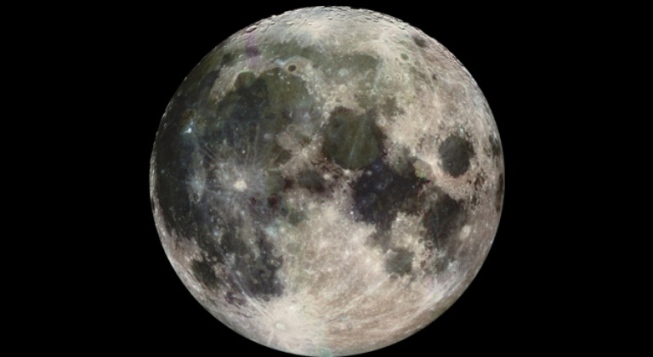
The Moon, imaged by NASA's Galileo spacecraft during its journey to Jupiter. Image credit: USGS
WASHINGTON (PTI): Researchers, including one of Indian-origin, have solved the mystery of why no 'face' exists on the far side of the Moon which is turned away from the Earth.
The 'Man in the Moon' appeared when meteoroids struck Earth-facing side of the Moon creating large flat seas of basalt that we see as dark areas called maria.
But no 'face' exists on the far side of the Moon and now, Penn State astrophysicists think they know why.
"I remember the first time I saw a globe of the Moon as a boy, being struck by how different the farside looks. It was all mountains and craters. Where were the maria?" said Jason Wright, assistant professor of astrophysics.
This mystery is called the Lunar Farside Highlands Problem and dates back to 1959, when the Soviet spacecraft Luna 3 transmitted the first images of the "dark" side of the Moon back to Earth.
Researchers noticed that fewer "seas" or maria existed on this portion of the Moon that always faces away from Earth.
Wright, Steinn Sigurdsson, professor of astrophysics and Arpita Roy, graduate student in astronomy and astrophysics, and lead author of the study, realised that the absence of maria, which is due to a difference in crustal thickness between the side of the Moon we see and the hidden side, is a consequence of how the Moon originally formed.
The general consensus on the Moon's origin is that it probably formed shortly after Earth and was the result of a Mars-sized object hitting Earth.
This "Giant Impact Hypothesis" suggests that the outer layers of Earth and the object were flung into space and eventually formed the Moon.
The Moon, being much smaller than the Earth, cooled more quickly. Because Earth and the Moon were tidally locked from the beginning, the still hot Earth - more than 2500 degrees Celsius - radiated towards the near side of the Moon.
The far side, away from the boiling Earth, slowly cooled, while Earth-facing side was kept molten creating a temperature gradient between the two halves.
Aluminum and calcium would have preferentially condensed in the atmosphere of the cold side of the Moon because the nearside was still too hot.
Thousands to millions of years later, these elements combined with silicates in the Moon's mantle to form plagioclase feldspars, which eventually moved to the surface and formed the Moon's crust, said Roy.
Earlier in its history, large meteoroids struck the nearside of the Moon and punched through the crust, releasing the vast lakes of basaltic lava that formed the nearside maria that make up the man in the Moon.
When meteoroids struck the far side of the Moon, in most cases the crust was too thick and no magmatic basalt welled up, creating the dark side of the Moon with valleys, craters and highlands, but almost no maria.
The study is published in the Astrophysical Journal Letters.
 Previous Article
Previous Article Next Article
Next Article













The Indian Air Force, in its flight trials evaluation report submitted before the Defence Ministry l..
view articleAn insight into the Medium Multi-Role Combat Aircraft competition...
view articleSky enthusiasts can now spot the International Space Station (ISS) commanded by Indian-American astr..
view article